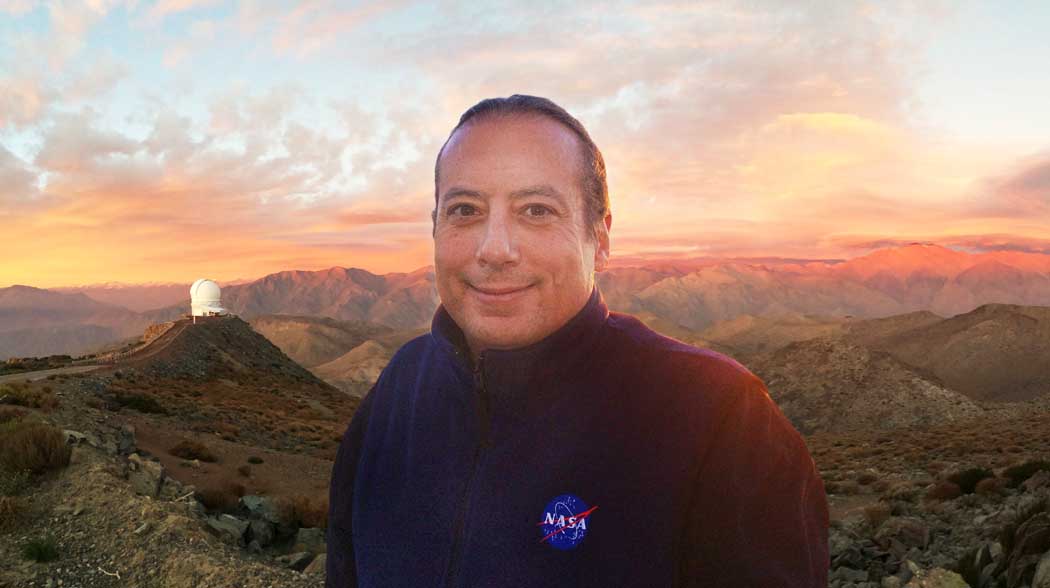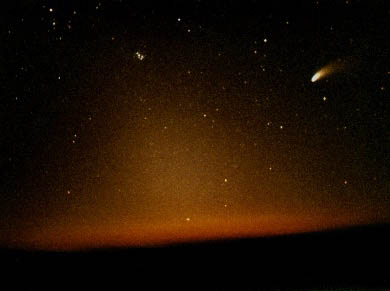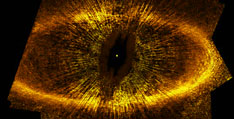
|
Exosolar Debris Disks |
|
Debris disks exist because comets and asteroids erode with time, and this erosion produces fresh dust that orbits a star. Dust grains may be heated by the star, in which case the dust is detected by its thermal infrared emission. Dust grains also reflect light, and typically this appears as a disk-like or ring-like nebulosity surrounding a star. In our solar system, this nebulosity is known as the zodiacal light, which can be seen right after sunset or just before sunrise. In the photograph below, I was fortunate that I could capture both the zodiacal light and comet Hale-Bopp in a single frame, thus illustrating how the erosion of comets produces comet tails, and comet tails replenish the dust responsible for the zodiacal light.
But what do debris disks around other stars look like, and what do they reveal about planets, comets and asteroids orbiting other stars? This is the key endeavor of my research, which basically has two components: 1) Searching for new debris disks in reflected light that have never been seen before, and 2) once they are discovered, using more sophisticated follow-up observations and theory to understand the origin and physical nature of debris disks. For example, through my Hubble programs we obtained the first optical images of a narrow dust belt surrounding Fomalhaut, one of the brightest stars in the sky. Careful analysis reveals that planetary perturbations most likely account for the sharpness of the belt's inner boundary, and the fact that the entire belt is centered on a point 25 AU away from the star.
To introduce debris disk science to students and to organize all of the available information, I created and maintain the Circumstellar Disk Learning Site. |

